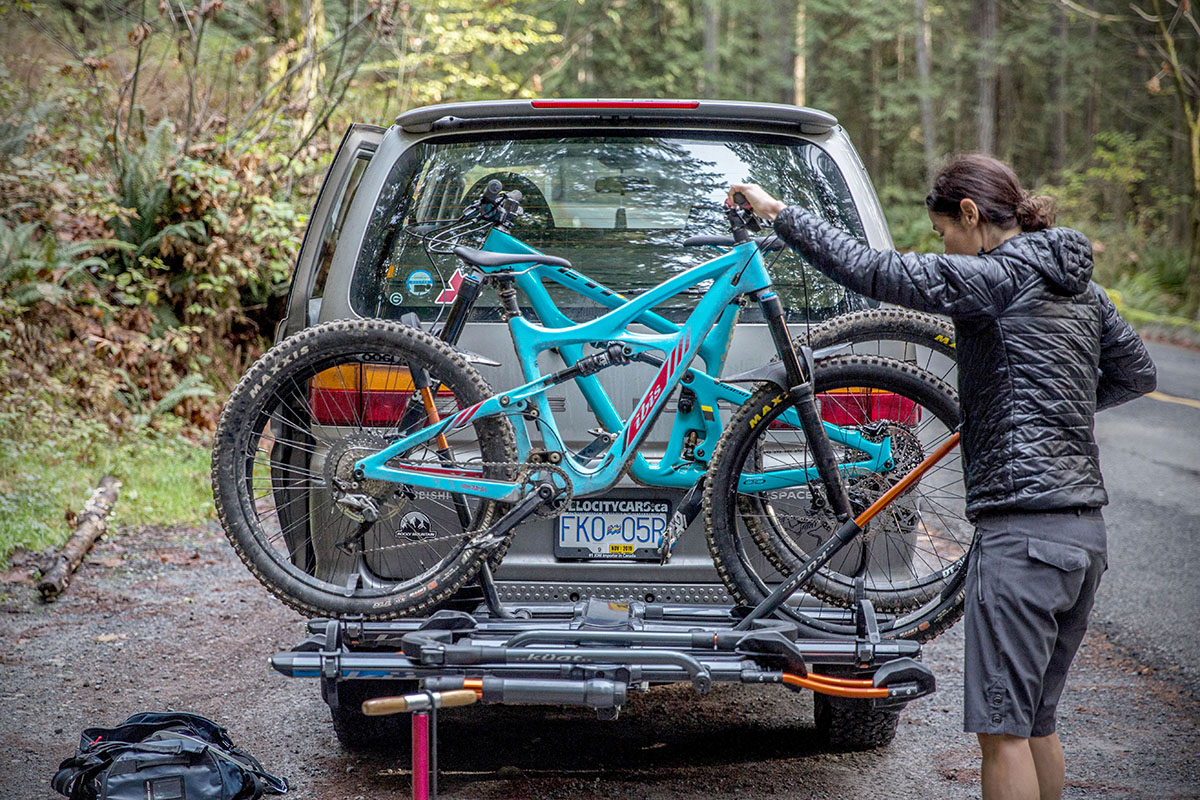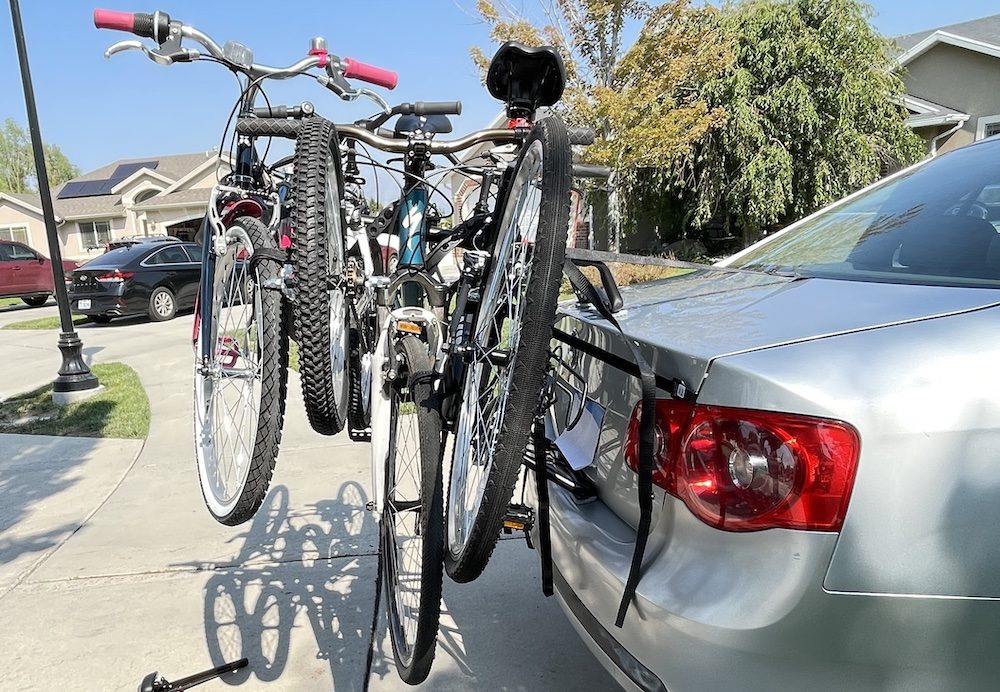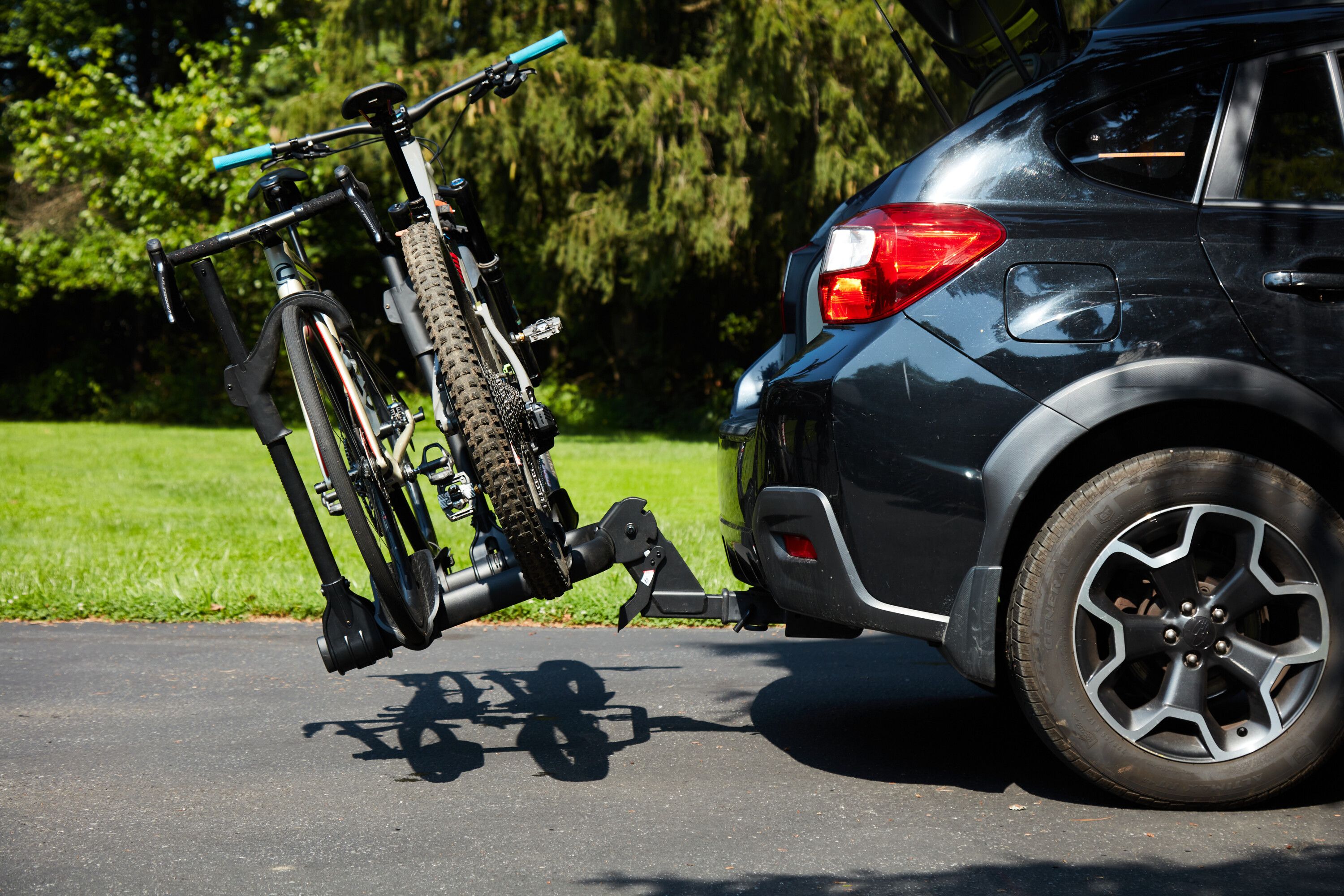How to choose the right bike rack?

Finding the right bike rack
So you’ve got yourself a bike, but now comes the issue of transporting it, which makes it counter intuitive. You got a bike for transport but now you gotta transport your bike before your bike can transport you! Having access to a reliable bike rack can make a world of difference. Not only does it give you the confidence to take your bike in any weather condition, it also ensures that neither your car or your bike gets damaged.
But not every bike is designed the same, and the same goes for a bike rack. With a myriad of bike racks flooding the market; like roof-mounted racks or truck-mounted carriers; it might make it difficult to pick the perfect one for you, but you can stay rest assured. With this blog, you will now be able to select the perfect bike rack for your perfect bike.
It’s important to understand firstly, what kind of lifestyle you live, and how big your car is. For example, if you have a bigger car like an SUV or pickup truck, transporting your bike can become easy as you wouldn’t have to worry about adding any additional weight. Some other factors to consider before investing in a bike rack are
Do I need to buy additional parts or attachments to install a bike rack on my vehicle?
Roof rails and cross bars are necessary to safely hold one or more bikes in place, and are not standard attachments on most vehicles, nor are they often included when purchasing a roof bike rack. Trunk mounted bike carriers typically arrive fully assembled and do not require additional attachment to mount onto your vehicle. Prior to purchasing a bike rack for your vehicle, confirm if adaptors or additional bars are required to safely install and mount a bike rack on your roof or rear.
So, when it comes to bike carriers, roof rails and cross bars are the go-to standard. They're the ones that keep your bikes safe and sound up there. But guess what? Most cars don't come with these built-in, so don't be surprised if your new roof bike rack doesn't include them.
Trunk-mounted bike carriers on the other hand are far more reliable and are accessible to a larger segment of the market right off the bat. Most trunk-mounted bike racks come pre-assembled, so you don't have to worry about setting them up. They also usually require no extra attachments – they just fit right onto your car hassle-free.
But before you settle on a bike rack, one important thing to consider is that some racks might need extra stuff like adaptors or extra bars. These are like the sidekicks that help make everything secure and snug. It's a good idea to double-check whether you need these extras to make sure your bike rack plays nice with your car.
How many bikes do I need to carry?
While some bike racks can only accommodate a single bike, others can accommodate up to four, but obviously a large portion of that decision comes from one’s family size. While a two-bike carrier is the ideal choice for most customers, you also need to ask yourself how important is that extra space for you?
Most vehicles and bike carriers also have a maximum weight capacity, so please confirm the total weight of your bikes to ensure they can be safely transported.
Roof-mounted bicycle carriers are designed with the capacity to accommodate a solitary bicycle, yet the potential for expansion emerges through the attachment of multiple carriers onto a framework of roof racks and crossbars. This allows you to carry up to four bicycles!
Hitch-mount and tow-bar bike racks offer formidable solutions and easily allow for two to three bicycles being carried. Their appeal is particularly pertinent for vehicles harboring an extant trailer hitch or tow bar infrastructure, an archetype embodied by SUVs, pickup trucks, and specific wagon models.

Trunk strap-on carriers offer an arena wherein the transportation of a single, dual, or even triple constellation of bicycles is made feasible. But you do need to be extremely cautious about how many bikes you want to load on to this carrier, as heavy loads can cause some damage on the rear panels of your vehicle.
How compatible is the bike rack with cargo carriers, skis, snowboards, or water sport accessories?
A bike rack should complement your lifestyle, not complicate it. If you enjoy going camping, skiing, or boating, you need to ensure that you buy a bike rack that doesn’t interfere with anything else. Installing a roof-mounted bike rack might make transporting your bike easier, but is it really easy if you have to remove it everytime you want to add another carrier?
If you enjoy participating in other sports and activities that require a rack to carry equipment such as skis, snowboards, kayaks, or a cargo basket, then purchasing a roof rack with crossbars is a great option for cross functional compatibility. Compatibility is the name of the game, and ensuring a bike rack that is compatible with multiple other racks is also a factor to consider.
Will it affect the way I park?
Most roof rack bike carriers will add a few feet to the height of your vehicle when a bike is mounted, so make sure to understand your vehicle’s parking needs prior to purchasing one as you might exceed a height clearance in an underground garage or drive-through underpass.
If you likely have to park your vehicle underground, then a trunk strap-on bike carrier or hitch-mounted carrier might work best for your vehicle.
Types of Bike Racks
Now that you’ve asked yourself all the right questions, let’s dive into the different types of bike rack.
Roof Mounted Bike Racks
Versatile carrier options, roof-mounted bike racks enable even compact vehicles like sedans and hatchbacks to transport up to four bicycles simultaneously. Usually fastening onto your vehicle's roof rails and crossbars, roof bike racks are more common on larger automobiles like SUVs and minivans. Vehicles without pre-existing rails or crossbars will require mounting clips and roof bar attachments, which secure onto the upper section of the door frames.
The majority of roof bike racks are vertically mounted carriers, securing one or multiple bikes along their frames and pedals. Despite their popularity, this option can pose challenges during installation due to the elevated position of the bikes on the roof. Incorrectly handling a bicycle can result in scratches on the vehicle's roof or side panels. Furthermore, taller vehicles might exceed the height limits set by parking garages or other overhead structures with limited clearance.

Alternate roof bike rack carriers necessitate removing the front wheel before installation. Clamps along the bicycle's wheel fork are then employed to secure it firmly. Although this process demands additional time for bike preparation and occupies trunk space, it simplifies the secure mounting of various bike frame styles on the roof. Additionally, it enhances driving safety for taller vehicles.
When acquired along with roof crossbars and supplementary adapters, a roof rack can also function as a foundation for transporting cargo boxes and gear used in winter or water sports, including skis, snowboards, canoes, and kayaks.
The price for an aluminum-framed roof bike carrier can vary between $150 and $250 for each bicycle. Moreover, if your vehicle lacks the necessary roof rails and crossbars, you may need to allocate an extra $200 to $400.
Bed Mounted Bike Racks
Bed mounted bike racks prove to be a favoured choice among pick-up truck owners due to their ability to be mounted either inside the truck's bed or above the side rails when accompanied by additional crossbars. This option holds particular appeal for a majority of truck owners, as it ensures the bed's cargo capacity remains unhindered, permitting the allocation of space for other equipment and cargo. Moreover, it doesn't impede access to the tailgate door, nor does it obstruct the tail lights or rear license plate.

The utilization of these elevated racks necessitates the installation of mounting bars along the truck box's sides. The process of installation and removal is akin to that of roof rack carriers, but it proves to be considerably simpler when it comes to mounting bicycles and any required adapters. This is attributed to the possibility of standing at a level within the confines of the truck's bed. While these carriers generally carry a higher price tag compared to trunk strap-on racks, they offer an additional layer of security for your precious bikes.
The cost of a bed mounted bike carrier, constructed from either aluminum or steel framing, spans a range of $150 to $250. These carriers can accommodate up to three bikes. Should you opt to mount the bikes above the truck bed while retaining the full cargo capacity, an additional investment of $200 to $400 is expected for the acquisition of rails and crossbars.
Trunk Mounted Bike Racks
One of the most popular options for bike rack carriers is the trunk-mounted rack, which attaches using straps onto the rear of your vehicle. These racks typically offer a universal fit for most vehicles and are particularly well-suited for hatchbacks and SUVs. This is because they can be easily secured onto flatter rear windows, contoured back doors, or bumpers.
Trunk strap-on carriers prove to be an excellent choice, especially for those who lease their vehicles and only need to transport a limited number of bikes, usually ranging from one to three. Compared to roof racks, these carriers are simpler to install and facilitate the mounting of one or more bikes. Additionally, they provide the advantage of allowing you to drive into underground garages and navigate through areas with lower clearances without any issues.

When it comes to trunk racks, those crafted from aluminum or steel offer heightened levels of security and durability, outperforming their hard plastic counterparts. While they may come at a slightly higher cost, the added benefits are well worth it. In terms of expenses, trunk-mounted racks are often one of the more budget-friendly bike carrier options. Prices can start as low as $100 for plastic models, and range up to $400 for premium aluminum or steel racks. These premium options typically feature indented or padded frames that accommodate up to three bikes and can be conveniently folded up for efficient storage.
There are some major drawbacks to consider, especially if purchasing an inexpensive plastic trunk rack:
- Trunk strap-on racks may offer less security compared to roof racks or hitch-mount racks, as the straps could wear out or become loose, particularly when transporting heavier bicycles like e-bikes or larger mountain bikes.
- The complete weight of both the rack and the bicycles is supported entirely by the vehicle's rear body panels. This could potentially result in paint damage or dents to the panels and bumper.
- On most vehicles, the trunk door becomes inaccessible when the rack is installed. This inconvenience can be particularly problematic during a road trip or outing.
- The driver's rear visibility might be obstructed due to the rack, which could also cover the taillights and license plate. It's important to note that in some areas, this could lead to a fine.
If a trunk mounted bike carrier best suits your vehicle and needs, then we recommend purchasing one with an aluminum frame that is padded or indented and has a higher weight capacity. Also ensure it has a secure strapping mechanism that is durable enough to handle the weight of your bikes. All of this reduces the possibility of any dents or scratches on your vehicle's rear panels or bumper from bearing too much weight, and reduces the risk of the bikes coming loose while in transport.
Hitch Mounted Bike Racks
Hitch-mounted and tow bar-mounted bike carriers present an excellent solution for vehicles capable of towing and equipped with an existing hitch or tow bar connected to the chassis. These carriers offer a secure means of affixing one or more bikes in position, all the while avoiding contact with your vehicle's exterior, thus minimizing the potential for scratches or dents. Typically fashioned from a sturdy steel frame and featuring aluminum rails, they prove ideal for accommodating heavier bicycles, including e-bikes.
Premium tow-bar mounted racks, designed with enhanced road safety and regulatory compliance in mind, incorporate a taillight connection and impose less obstruction on your license plate compared to traditional strap-on trunk bike carriers. Particularly advantageous for taller vehicles such as SUVs, these racks offer a simplified installation and mounting process, performed conveniently at ground level.
The cost spectrum for hitch-mounted or tow bar-mounted bike carriers varies, ranging between $250 and $400, with the capacity to hold up to three bikes. On the higher end of the price scale, more costly alternatives encompass additional features such as tail light connections and a tilting mechanism, facilitating easier access to the trunk. These premium options can reach price points as high as $900.

Several considerations warrant attention, however. Notably, numerous smaller vehicles, including sedans, lack a trailer hitch and may not boast towing capabilities. Consequently, an additional expense arises for procuring and installing a hitch or tow bar, potentially necessitating the drilling of holes into the vehicle's chassis. It's important to recognize that such actions could impact the vehicle's warranty, making them ill-advised for leased vehicles. Furthermore, akin to trunk-mounted carriers, certain hitch-mounted bike racks may impede the driver's rear visibility and obscure the taillights and license plate, which could result in penalties in certain jurisdictions.
To ensure a judicious purchase, we recommend acquiring a hitch-mounted carrier solely if your vehicle is already outfitted with a trailer hitch or tow bar. Furthermore, opt for carriers that include tail light connections to ensure optimal road safety and adherence to regulations.
Conclusion
While it is still a pretty daunting task, this article should definitely help you get a better understanding before purchasing your first, and hopefully, last bike rack. Remember, power is knowledge, and going into a purchase with all the information is exactly what you need, but to make the most of your purchase, remember to shop our collection of bike racks and more and enter a world of savings!!
